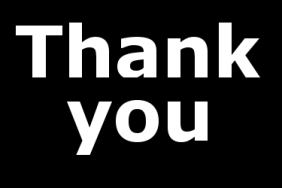Editor’s Letter is a series of ongoing articles on the state of PSLS, its future and the future of the industry as a whole.
If you were to try to describe the media in the naivest possible way, it would be “a platform for telling you what is happening”. Of course, what the media tells people, how it tells them and why it tells them news is far from impartial. As a window into the world, it is opaque, skewing what is real to present their agendas. Gill’s Gender and the Media explains that “research drawing on post-structuralist frameworks argued that the media were involved in constructing reality. Quite literally they produced and constituted understandings, subjectives and versions of the world.”
In today’s Editor Letter, I’ll take a look at the media’s grip on our minds, the impact of the internet and whether games journalism warps the industry.
Newspapers
Sure, most newspapers are slowly dying, with circulation numbers falling as consumers switch to the internet and/or the TV, or simply stop caring about what’s happening, but they are still a phenomenal force to be reckoned with. Millions of people around the world use newspapers as their primary source of daily information, and are imbued with its political and ideological slant.
In the UK, pro-Conservative newspaper the Daily Mail has a readership of 4.371 million (as of 2011), a frightfully high percentage of the 62 million people in the country, with The New Yorker describing it as “The newspaper that rules Britain”.
Steadfastly anti-immigration, you’d be hard pressed to find a day where headline stories don’t involve criminal immigrants or evil “illegals”. Isn’t it convenient that the ‘news’ seems to match up with their agenda? It has nothing to do with their writers, sub-editors and editors strongly focusing on these stories and ignoring similar ones that involve British-born nationals, of course. It has nothing to do with the paper’s deeply racist heritage, including the infamous Lord Rothmere (their owner at the time) article in 1933, where he predicted that “the minor misdeeds of individual Nazis would be submerged by the immense benefits the new regime is already bestowing upon Germany”. This minor “misdeeds” of course “already included the setting up of concentration camps at Dachau and Oranienburg” (Unreliable Sources: How the Twentieth Century Was Reported, John Simpson). It has nothing to do with that at all. Clearly, all immigrants are evil and should be hated. That’s the truth, it must be – it’s in the paper, after all.
As a newspaper, the Daily Mail is an extreme example, it’s a paper that called a multiple negligent manslaughterer a “Vile product of welfare UK” simply because the tragic event helped push their views on curbing welfare in the nation. Derby North MP Chris Williamson criticized the front page, saying: “they are using the deaths of those children in a shameful way in pursuit of an agenda to destroy the welfare state… This is the worst kind of gutter journalism I’ve ever seen in my life.”
But every paper does it, every paper has a political stance, and they don’t keep those views to the opinion section. It’s a part of the news, no line is drawn. The left loves to attack the right and report on ‘lefty successes’, while the right does exactly the same back. Some are better than others (The New York times, for example), but bias is always present.
That’s why it’s surprisingly hard to find out what has actually happened.
Niche Media
Niche media industries are particularly interesting: they cater to a specific audience and must first obviously create content for that audience to stay in business, but, once that readership exists, they have the ability to influence it, usually for advertising reasons. Let’s take a look at some.
Women’s magazines:
Women’s magazines collectively comprise a social institution which fosters and maintains a cult of femininity. This cult is manifested both as a social group to which all those born female can belong, and as a set of practices and beliefs: rites and rituals, sacrifices and ceremonies, whose periodic performance reaffirms a common femininity and shared group membership. (Forever Feminine: Women’s Magazines and the Cult of Femininity, Ferguson)
The idea is to create a small society that shares the same ideology, so that they buy magazines and engage in the magazine’s culture, while also making content creation and ad providing all the more simple.
Contemporary women’s magazines are generally dominated by beauty and fashion articles, many of which are surrounded by beauty and fashion advertisements. One clear example is the renowned Cosmopolitan – it began targeting women almost exclusively with the 1967 revamp, when it moved away from the family market and broad appeal content. Editor Helen Gurley Brown, then best known for her book about sexually liberating women, Sex and the Single Girl, made Cosmopolitan about sex and women’s rights. “In the mid ’60s, however, a magazine for young single women that talked openly about sex and encouraged them to enjoy themselves as men did was considered shocking.” (The American Beauty Industry Encyclopaedia, Willett).
At the time, Cosmo was a huge leap forward for women’s rights, ushering in a world where a magazine could exist that was fully dedicated to women’s opinions and lifestyles, mixed with sensationally topless pictures of young actors like Burt Reynolds. Now, not much has changed, and that is the problem. Cosmo previously represented progression in the magazine industry, and progression in female representation. But that progression was born out of dipping sales, and, now that the formula has proved financially successful, it has been kept the same.
So what do women’s magazines tell their female readership? As you can probably guess, they promote unrealistic body images, emphasize men’s importance in the world and do little to help women improve their position of society.
The body obsession is particularly harmful – in The Developmental Psychopathology of Eating Disorders, Smolak, Levine and Striegel-Moore describe the attitude of magazines as “the glorification of slenderness”: “There is ample evidence that the prototypical female model appearing in fashion layouts and advertisements in women’s magazines during the past 20 to 25 years is young (under 30 years old), tall, long-legged, and very slender.”
In different eras, magazines have shown varying ‘perfect figures’ of differing proportions, but a study of the curvaceousness of models in Vogue and Ladies Home Journal shows that it “declined sharply during the period between 1910 and 1930, rose again between 1930 and 1950, and then declined sharply during the 1960s to a steady low level at the end of that decade and throughout the 1970s” (p239). Since the ‘60s, this obsession with slimness has only grown steadily worse, with the internet and high-zoom lenses further fueling an anti-weight culture.
The Handbook of Eating Disorders also notes the increasing emphasis on weight loss, adding: “not surprisingly, the number of articles discussing bulimia reported in two major medical journals… also began to increase in the 1960s.” (Brownell).
This pursuit of visual perfection is inherent in Cosmo, as well as the majority of women’s magazines. Articles show what some people look like, and tell the audience that that’s what everyone should look like – otherwise they will receive intense criticism about every dimple or ripple of flesh. The pages focus on breeding feelings of inadequacy, fear and worthlessness, with the only hope of combating them found in the ads and advertorials, ‘because you’re worth it’.
This aspirational content presents mostly unattainable body types to an audience that is often very young and impressionable, as well as desperate for love, attention or a way to ‘fit in’. “In their pursuit of the specter of perfect femininity, women are encouraged to buy both the products that the magazines promote and the magazines themselves.” (Critical Readings: Media and Gender, Steiner)
For the media, it’s a win-win: They can feed off of the existing culture of image-obsession, while also contributing to it and using it to essentially insult people until they buy products that the magazines themselves advertise.
With many pure entertainment articles, informative pieces and money saving tips, there is value in women’s magazines as purveyors of pleasure. But, as the magazines offer advice, through the use of features, agony aunts and reviews, they set themselves up as a parental figure, leading the readership and advising them on their lives. Therefore, any ideology they purvey influences their audience, with the often-male dominated suggestive tones impacting women’s place in the workplace, at home and in society as a whole. “Many feminist authors began to suggest that the representations of women prevalently offered in women’s magazines were not simply ‘ideological’ chimera, but had repercussions in women’s lives that were both concrete and material.” (Understanding Women’s Magazines: Publishing, Markets and Readerships, Gough-Yates)
If one were to describe the look and psyche of a woman purely based on what was read in a current women’s magazine, rather than any actual interaction or self-experience, the result would be far from pleasant – a mixture of stereotypes and inadequacies, wrapped in an expensively creamed skin. Magazines serve as a representation of women, but are not representative.
Men’s magazines:
Men’s magazines aren’t as opaquely harmful to male audiences as women’s are to a female audience. Publications like GQ focus far less on the opposite sex than their female counterparts, and the ideal body type the media presents (muscly, trim) is no where near as unhealthy. It could also be argued that these magazines help create a culture in which not fitting their fashion/lifestyle criteria makes one unmanly and those individuals should be frowned upon, or even socially rejected. But if we really want to look at where things have gone tragically wrong, lads’ mags are the place to start.
The men’s market as we know it today really took off with the launch of Loaded in 1994. Loaded is widely recognized as the cornerstone of the modern British ‘lad’ culture, and for years now UK journalists have regularly used ‘Loaded reader’ as a shorthand for a kind of twenty-something, beer-drinking, football-loving, sex-obsessed male stereotype…. Predictably masculine themes including sport, drinking, gangsters, silliness, some ‘joke’ sexism, a few scantily-clad women. Plus fashion. The singularity of its conception of manhood makes Loaded, arguably, more boring than it is offensive. (Media, Gender, and Identity: An Introduction, Gauntlett)
Lads’ mags haven’t taken off in the US as much as they have in the UK, so I’ll focus on the UK publications like Loaded, Nuts and Zoo.
As far more lowbrow publications than the metrosexual GQ, they embrace red blooded heterosexuality to the full extent of its carnal desires. The 1-7 February 2013 edition of Zoo shouts on its cover: “The new boobs on the block!” Boobs are the main bread and butter of the incredibly sexualized magazine, painting women as sex furniture, rather than actual human beings. Crammed in between all the naked women are a series of other standard fare content that many see as the definition of being a man – football, computer games, drinking games, cars, horrific injuries, pro-gun posts and films involving explosions and guns, such as Bullet to the Head.
The magazine also makes such a culture seem like the only logical action for a young male, so not fitting into this role type can be seen as ‘odd’ or unsociable. Some have even tied such publications to the rise of ‘laddism’ in the UK, which has led to heavy drinking, a rise in sexism and a disdain of reading.
As a guide for how men should interact with women, it certainly seems to suggest that women are all simply for the taking, and that they should fulfill certain, often unhealthy, body types. A “resident sexpert” advises readers on page 76 about “The Noble Art of Pulling”. The objectification and demeaning representation of women helps push the sexist view that has permeated culture for countless generations.
As a portrayal of men, it paints a picture of a deeply unpleasant chauvinist, stuck in perpetual party mode with an unquenchable desire for oversized mammary glands and desperate beyond reason for instant gratification entertainment no matter the cost.
Along came the internet:
So far I’ve looked at print publications, the titans of yesteryear. Soon, they’ll be dead, with everyone moving online for faster, cheaper and more abundant news coverage. But has anything really changed?
One great thing about the internet is that you don’t need to be millionaire to disseminate content. You don’t need to buy a huge printing press, pay distribution costs or have an office filled with journalists demanding to be paid. That means that the online publications don’t have to share the same ‘hey aren’t millionaires awesome’ view that a suspiciously high number of print publications have.
Of course, for an outlet to be able to be able to report on news going on around the world firsthand, they’ll need a huge staff employed around the world, so, while commentary and opinion pieces can be published by anyone, comprehensive and original news coverage is still the domain of the rich. Thankfully, we’ve got social sites like Twitter and Facebook that are eroding at this power by allowing people at the scene of an incident to cover what is happening live, often long before any journalists get there – but the abundance of trolls, publicity stunts and downright idiots makes using Twitter as a news source a questionable act. People have pretended to be at the scenes of disasters, named innocent people as pedophiles or ‘solved’ crimes from the comfort of their bed.
Comments systems below articles, a feature available on most sites, allow for open public criticism of coverage, so that the public can call out factual inaccuracies, tastelessness or clear agenda-pushing. It’s a step in the right direction, but, considering most comments end up being more inaccurate and biased that the offending article, they are often ignored.
The internet has been an improvement over the monopolies of the past: there is a lower barrier of entry, more community interaction and the speed of publication means that other sites can criticize poor articles immediately, destroying poorly formed arguments before they have had time to root themselves in the mind of the majority. But, with the incessant babble of voices forever shouting, it can be hard to find out what is true. Idiots still stick to biased outlets, while those striving to be informed will always struggle to find any consensus on the internet, with every argument canceling out every other one.
Online games media:
I’ve made my views on games journalism abundantly clear before – it’s mostly awful. PR relationships are too close, the quality of writing is generally poor, and the content is purely designed to get traffic (and therefore money). When it comes to news, what’s being googled the most by people is what’s given priority, rather than what’s important. In both news and opinion pieces, negativity is cherished – take the Vita, for example: while it’s now clear that the Vita is severely struggling, many publications immediately started proclaiming it was dead the minute it launched, despite there being far too little data (something they had earlier done with the 3DS, which went on to perform swimmingly). Doom and gloom guarantees traffic, sexualization guarantees traffic and needless controversy guarantees traffic.
Many wonder why there are so few women who play games, and even less that have a presence in online gaming communities, but one only has to look at the endless sex obsession over digital breasts and it’s clear why many are put off.
Users are a means to an end – profit. While there are better publications out there (Polygon, Penny Arcade when they’re not doing this), the vast majority gains traffic by manipulating aggregate sites with flamebaity headlines that are often downright lies, or by shoving so many keywords into a title it no longer makes any real sense. Unlike newspapers, where political agendas are often pushed, the only aim here is to get readers in by any means.
Quality and objectivity is a running joke, most of the time you’re just reading what a PR person said. News or coverage that is complicated is often left out, because it’s easier and more cost-effective to write 20 different screenshot posts in the same time.
Also hyperlinks are continually worked into articles to get you to visit more pages.
It’s the readers’ fault:
Here’s the problem – in most of these cases, the publications were born out of already preexisting feelings from the audience, whether it is the prevailing hatred of immigrants, a visual insecurity, a need to compare PS3 and 360 screenshots or whatever their particular vice may be. ‘These outlets are simply scratching that itch’ is a common argument given by their defenders. But the problem is that much of the coverage is deceitful, people don’t always know the true extent of how the media warps reality, how every article is cherry-picked to fit certain criteria. And then there’s the newcomers to any particular medium, who aren’t immediately aware of the manipulation, and end up buying into it before they have a chance to realize. Essentially, the media is like cigarette manufacturers – an immoral group that’s catering to the already-converted who will seek them out, while constantly dragging more people in.
Most people are stupid, but that doesn’t mean the press should take advantage of them.
Pure objectivity is probably impossible as we are all formed by our upbringing, life experiences and individual mindsets. Hell, after re-reading this, I’m pretty sure I chose the Daily Mail as I find them deeply unpleasant and am strongly opposed to their views (also: they hate videogames and love to blame them for murders). But just because something may be unreachable doesn’t mean we shouldn’t strive for it.
Good journalism is about trying to be objective, trying to separate news and commentary, rather than purposely aiming to add in views that make the news seem like it proves your opinion.
What next?
If you’re reading this hoping for a grand idea to solve everything, I’m sorry to disappoint. As an individual, you can stop visiting sites (or buying publications) that blatantly offend, you can visit and support those that you think are quality, and you can be vocal against all that is wrong, helping spread a better understanding of the flaws of the media. But it doesn’t matter, the majority of people will always be stupid, will always buy into what they’re told, fueling it further and feeding the beast.
And that’s the truth – after all, a publication says it’s true.








